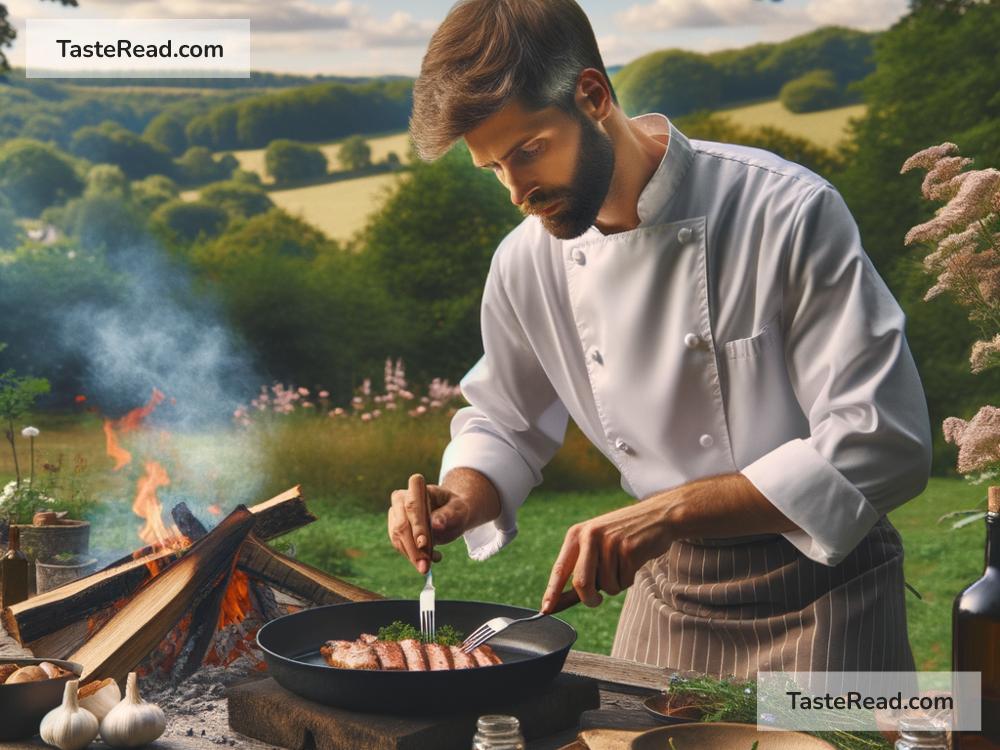Learning to Cook Over Woodfire: A Rustic Culinary Adventure
Imagine stepping back in time, where microwaves and electric ovens don’t exist, and the warmth of a flickering flame is your guide to creating delicious meals. Cooking over woodfire isn’t just about making food; it’s about embarking on a rustic culinary adventure that awakens all your senses, connects you with nature, and introduces a hint of the wild into your kitchen. Whether you’re a seasoned chef or a curious foodie, learning to cook over woodfire will transform ordinary ingredients into extraordinary experiences.
Why Cook Over Woodfire?
Cooking over woodfire goes beyond just grilling; it’s an ancient technique that brings a distinct smoky flavor impossible to replicate with modern cooking appliances. This method allows you to slow down, appreciate the raw beauty of nature, and infuse your meals with love and a primal touch that elevates the taste to new heights.
But it’s not just about taste. It’s also about reconnecting with the past and understanding how our ancestors prepared their meals. There’s something deeply satisfying and grounding about using fire, a basic element of nature, to nourish yourself and your loved ones.
The Basics of Woodfire Cooking
Before you dive into the world of woodfire cooking, there are a few basics to keep in mind:
-
Choosing the Right Wood: Not all wood is created equal when it comes to cooking. Hardwoods like oak, hickory, and maple burn slower and provide a steady heat, perfect for cooking, along with a delightful aroma that infuses your food. Avoid softwoods like pine; they burn fast and can impart a resinous flavor to your dishes.
-
Building the Fire: Start with smaller pieces of dry kindling and gradually add larger pieces of wood. Patience is key. You want a bed of glowing coals rather than a roaring fire. This provides a consistent heat source that’s ideal for cooking.
-
Managing the Heat: One of the real arts of woodfire cooking is learning to control the heat. Use the zones of your fire – the hottest at the center and cooler on the edges. Move your cooking vessels or food around these zones to regulate cooking temperatures.
-
Cooking Equipment: While you can place some foods directly on the coals or grill grate, other dishes might require a pot or pan. Cast iron cookware is your best friend here, as it withstands high heat and distributes it evenly.
Starting With Simple Dishes
If you’re new to this, starting with simple dishes can help you get the hang of cooking over a woodfire. Here are a few ideas:
-
Skewered Vegetables and Meat: Skewering chunks of meat and vegetables and roasting them over the coals is a great way to start. It’s simple, and the direct heat will give them a lovely char and flavor.
-
Baked Potatoes in Embers: Wrap potatoes in aluminum foil and nestle them in the coals. They’ll bake to perfection and have a wonderful smoky flavor.
-
Pan-Seared Bread and Sandwiches: A cast-iron skillet can make amazing toasted bread, grilled cheese sandwiches, or any panini style creation. The woodfire adds a crispy texture and distinct taste you’ll love.
Embracing the Adventure
Cooking over woodfire is as much about the adventure as it is about the food. It invites creativity, from experimenting with different wood types to playing around with cooking techniques like smoking or slow roasting. Each type of wood imparts its unique flavor, adding a new dimension to the dishes.
It’s also about embracing the outdoors. Cooking in the open air, under the sky, by the warmth of a fire you built—there’s a deep sense of satisfaction and connection in these experiences.
Safety First
It’s crucial to keep safety in mind. Always cook in a well-ventilated space, clear of overhanging branches or anything flammable. Keep water or a fire extinguisher nearby in case the fire gets out of control. And never leave the fire unattended.
Closing Thoughts
Learning to cook over woodfire is indeed a rustic culinary adventure, replete with unique flavors, ancient techniques, and an intimate connection with nature. It’s a journey worth embarking on for anyone who loves food, values tradition, and is eager to experiment. So gather some wood, light your fire, and let your culinary adventure begin. Who knows what delicious discoveries you’ll make?


